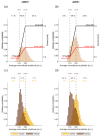Adaptive vs. Conventional Deep Brain Stimulation: One-Year Subthalamic Recordings and Clinical Monitoring in a Patient with Parkinson's Disease
- PMID: 39451366
- PMCID: PMC11504236
- DOI: 10.3390/bioengineering11100990
Adaptive vs. Conventional Deep Brain Stimulation: One-Year Subthalamic Recordings and Clinical Monitoring in a Patient with Parkinson's Disease
Abstract
Conventional DBS (cDBS) for Parkinson's disease uses constant, predefined stimulation parameters, while the currently available adaptive DBS (aDBS) provides the possibility of adjusting current amplitude with respect to subthalamic activity in the beta band (13-30 Hz). This preliminary study on one patient aims to describe how these two stimulation modes affect basal ganglia dynamics and, thus, behavior in the long term. We collected clinical data (UPDRS-III and -IV) and subthalamic recordings of one patient with Parkinson's disease treated for one year with aDBS, alternated with short intervals of cDBS. Moreover, after nine months, the patient discontinued all dopaminergic drugs while keeping aDBS. Clinical benefits of aDBS were superior to those of cDBS, both with and without medications. This improvement was paralleled by larger daily fluctuations of subthalamic beta activity. Moreover, with aDBS, subthalamic beta activity decreased during asleep with respect to awake hours, while it remained stable in cDBS. These preliminary data suggest that aDBS might be more effective than cDBS in preserving the functional role of daily beta fluctuations, thus leading to superior clinical benefit. Our results open new perspectives for a restorative brain network effect of aDBS as a more physiological, bidirectional, brain-computer interface.
Keywords: adaptive deep brain stimulation; biomarkers; local field potentials; neuromodulation; parkinson’s disease; subthalamic nucleus.
Conflict of interest statement
V.A. and M.A. are employees of Newronika S.p.A. L.R., S.M., and A.P. are founders and shareholders of Newronika S.p.A. I.U.I. is a Newronika S.p.A. consultant and shareholder and received funding for research activities from Newronika S.p.A. I.U.I. received lecture honoraria and research funding from Medtronic Inc. I.U.I. is an Adjunct Professor at the Department of Neurology, NYU Grossman School of Medicine. R.E. received research fundings (paid to the Institution) by Newronika S.p.A. V.L. received payments from Medtronic Inc. for sponsored presentations, and from Wise S.R.L., Newronika S.p.A., and Boston International for consultancy services. He also received support from ClearPoint for attending meetings and holds a paid leadership role on the Boston Medical Board of Boston International.
Figures



References
-
- Pozzi N.G., Isaias I.U. Chapter 19—Adaptive Deep Brain Stimulation: Retuning Parkinson’s Disease. In: Quartarone A., Ghilardi M.F., Boller F., editors. Handbook of Clinical Neurology. Volume 184. Elsevier; Amsterdam, The Netherlands: 2022. pp. 273–284. Neuroplasticity. - PubMed
Grants and funding
- Grigioni Foundation for Parkinson's disease
- Project-ID 424778381 - TRR 295/Deutsche Forschungsgemeinschaft
- New York University School of Medicine
- The Marlene and Paolo Fresco Institute for Parkinson's and Movement Disorders
- NRRP "Fit4MedRob - Fit for Medical Robotics" Grant (# PNC0000007)./Italian Ministry of Research
LinkOut - more resources
Full Text Sources

